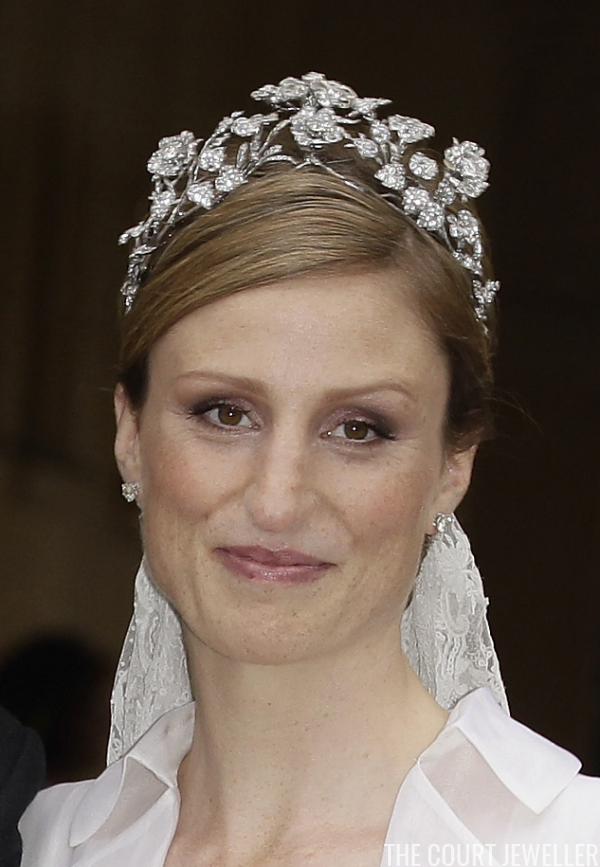 |
| The Isenburg Floral Tiara (Photo: Andreas Rentz/Getty Images) |
The Brazilian Aquamarine Tiara
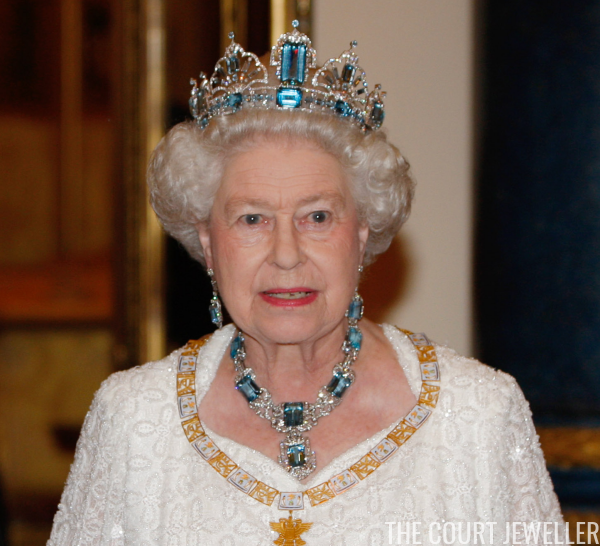 |
| The Brazilian Aquamarine Tiara (Photo: Stephen Hird/WPA Pool/Getty Images) |
Most of the sparkling tiaras worn by Queen Elizabeth II of the United Kingdom were legacies from queens and princesses past, but a few of them have been hand-picked or commissioned by the Queen herself. Today’s tiara, the Brazilian Aquamarine, was ordered by the Queen as a part of an evolving parure of jewels.
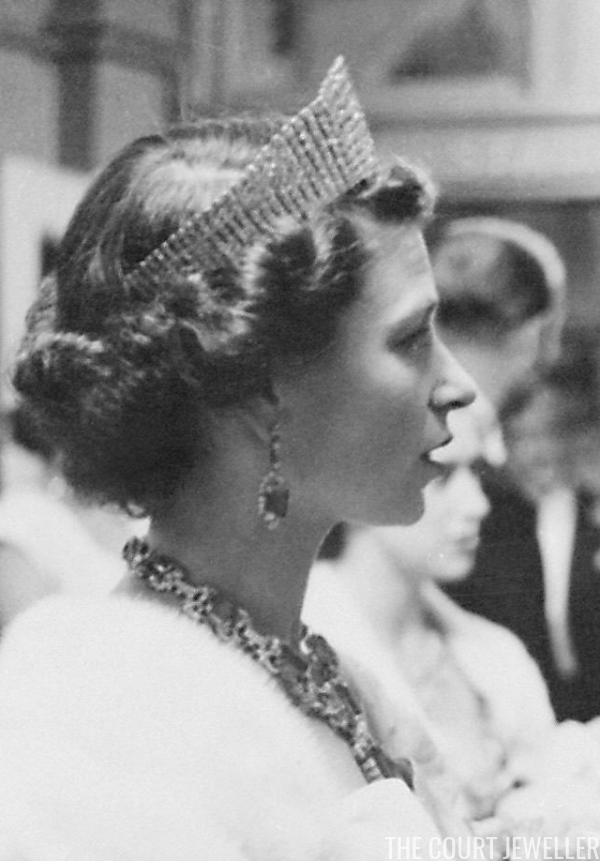 |
| Photo: STR/AFP/Getty Images |
The Brazilian aquamarine parure didn’t start with a tiara; it began with a necklace and a pair of earrings. These diamond and aquamarine pieces were presented to the Queen in 1953 by the Brazilian president as a coronation gift on behalf of the people of Brazil. Leslie Field describes the necklace as follows: “nine large oblong aquamarines each in a diamond scroll setting with an even bigger oblong aquamarine pendant drop.” The earrings were designed to mimic the setting of the necklace’s pendant. Above, she wears the earrings and necklace with Queen Alexandra’s Kokoshnik in 1957.
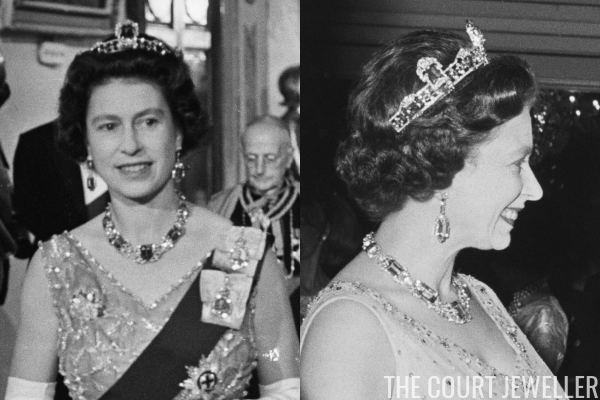 |
| Photos: Harry Dempster/Daily Express/Getty Images; Douglas Miller/Keystone/Getty Images |
By 1957, the Queen had also commissioned Garrard to make a tiara to match the aquamarine demi-parure. The tiara featured an elaborate diamond and aquamarine bandeau base, with three aquamarine and diamond elements placed at intervals. You can see two different angles on the tiara above. On the left, the Queen wears the tiara with the necklace (sans pendant) and earrings on a visit to Malta in November 1967; on the right, she dons the tiara to watch Margot Fonteyn and Rudolf Nureyev dance at Covent Garden in March 1969.
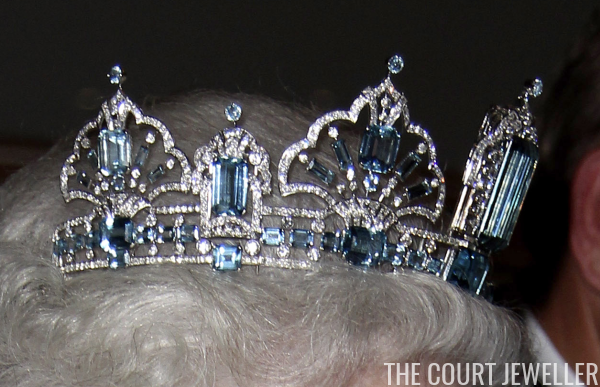 |
| Photo: ROB GRIFFITH/AFP/Getty Images |
The parure kept evolving, in part because Brazil kept generously offering more aquamarines to the Queen. They presented her with a bracelet and brooch to coordinate with the set in August 1958, and in 1968, when the Queen made her first state visit to Brazil, the Governor of Sao Paolo gave her an aquamarine and diamond hair ornament. According to Field, stones from this ornament were used in 1971 to super-size the aquamarine tiara. (For years, many believed that this hair ornament might have been the smaller aquamarine tiara now worn by the Countess of Wessex, but as that tiara still exists, that can’t be the case.)
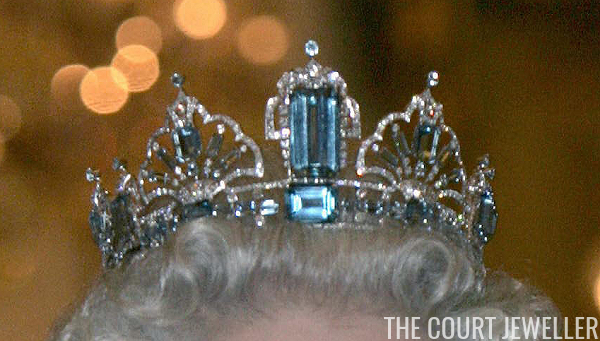 |
| Photo: MICHAEL DUNLEA/AFP/Getty Images |
The central stone was swapped for a larger one — the original pendant from the necklace — and four new motifs were made to set between each of the three upright oblong aquamarines. Field describes these as “scroll-shaped motifs,” but I’ve always thought they were rather fan-like in their design. Each of the elements of the tiara was also topped by a round, collet-set aquamarine.
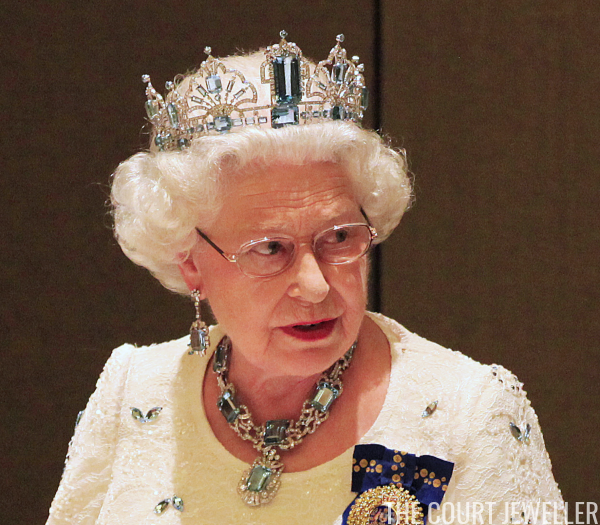 |
| Photo: RON D’RAINE/AFP/Getty Images |
The Queen has worn the tiara fairly consistently since its overhaul, even though it’s now one of the tallest and most imposing diadems in her collection. The last time we saw her wear the tiara in public was during the Commonwealth Heads of Government Meeting in Australia in October 2011. As she is opting more and more for lighter-weight tiaras these days (mainly the GGBI and the Belgian Sapphire), it will be interesting to see if this tiara makes it out of the vaults again anytime soon.
Royal Purple Amethysts for Queen Elizabeth
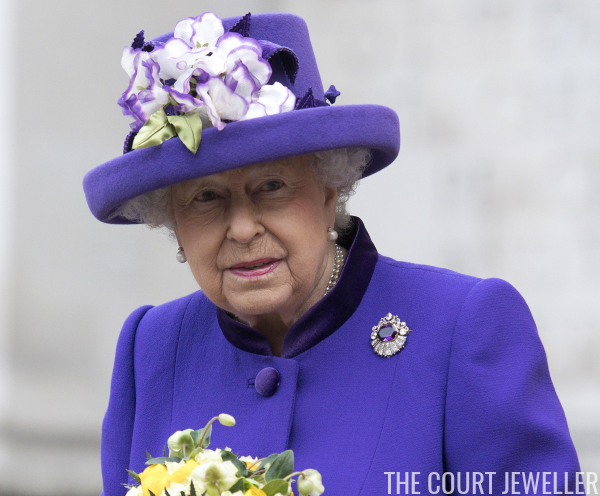 |
| The Queen attends a service of thanksgiving for the Duke of Edinburgh’s Award (Photo: JUSTIN TALLIS/AFP/Getty Images) |
The Queen and the Duke of Edinburgh stopped by Westminster Abbey on Thursday for, strangely enough, a thanksgiving service (for the 60th anniversary of the Duke of Edinburgh’s Award). And she wore a brooch with two centuries of royal history: one of the Kent amethysts.
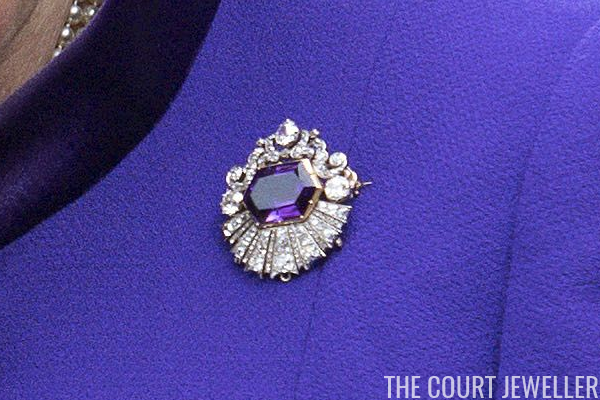 |
| Photo: JUSTIN TALLIS/AFP/Getty Images |
Here’s a closer look at the brooch. The Kent amethyst suite is one of the oldest — perhaps the very oldest — sets of jewelry in the royal collection. The set includes a necklace, earrings, a pair of hair combs, and three brooches, but the Queen usually wears only this brooch. Leslie Field describes the diamond setting as a “sunray design.”
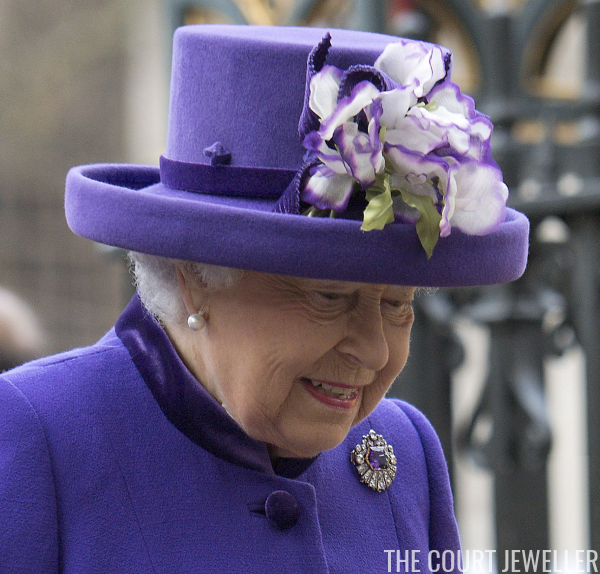 |
| Photo: JUSTIN TALLIS/AFP/Getty Images |
The brooch dates to the first half of the nineteenth century. Its originally owner was the Duchess of Kent, daughter-in-law of King George III and mother of Queen Victoria. The jewels were designated “heirlooms of the crown” by Queen Victoria, so the Queen has had them in her collection since 1952.